Double Decker Freeway Would Hurt Soldiers Home
The at-grade alternative for reconstructing I-94 is better alternative, that won’t harm this landmark.
The at-grade alternative for reconstructing I-94 is better alternative, that won’t harm this landmark. Back to the full article.

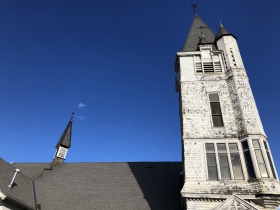
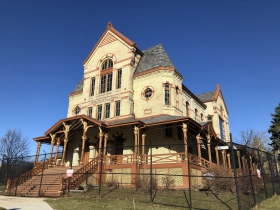
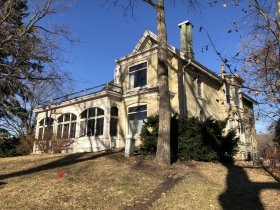
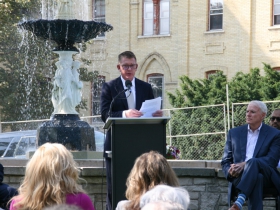
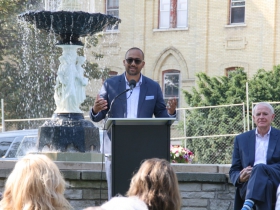
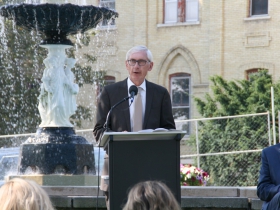




















The proper title should be “Double Decker Freeway Would Hurt Wood National Cemetery Views.”
The double deck freeway would not really impact the soldiers home itself.
But that’s ok, this op-ed lost any credibility when they compared 1.1 million to 825 million and decided it was nearly double.
Isn’t that “roughly” half AG?
No.
I can’t wait for the next income inequality discussion if it’s valid to call 3 “roughly” half of 4. Half of $15 is $7.50, and roughly half is $11.25… I might be able to make the case that the minimum wage is already “roughly” more than the $10.10 the Democrats are asking for…
Yeah, I can have fun with that one!
Exactly Kyle. They said “roughly,” otherwise known as “more or less.” So, you know, 3 is kind of almost in some ways half of 4, almost.
This is really going to help my purchasing power. Next time I’m at the movies, I’ll make sure to offer them $11 for two tickets instead of $8 for one. I mean, it’s basically half… so $11 should cover two tickets.
Okay PMD. But I’m bookmarking this page and using that equivilency against you until Bruce takes the page down. Just keep in mind that you could build the streetcar twice with his rounding error.
Leaving aside the “roughly” question, the argument is very unpersuasive. You can barely see the Soldier’s home from the freeway now. For crying out loud, Miller Park is between the freeway and the Soldier’s Home. So as AG said, the only argument is that it would split the cemetery. That is no doubt true, but come on! “Visual continuity!?” If that is all you got, then bring on the double decker.
A proposal to double deck a freeway in Milwaukee? That’s the craziest idea transportation planners ever came up with. Much better to build light rail from Milwaukee to Waukesha. It will help cut emissions, reduce traffic, add productive time to commuters lives, and save taxpayers a lot of money. Add together car depreciation, the cost of maintaining freeways and roads, traffic signals and signs, the cost of fuel, maintenance and repairs, the emissions of toxic carbon from the fuel and the mines required to get it, insurance premiums, the courts required to litigate insurance claims and to keep bad drivers off the road, 30,000 killed annually and hundreds of thousands more injured every year and associated health care costs, and you have the most expensive transportation system ever invented.
Roughly double or not, the double decker is considerably more expensive and last I checked neither the state nor the DOT is flush with cash right now. Considering the opposition from the community and city, the DOT should stop pushing so hard for the double decker option.
We don’t need more concrete, just smaller vehicles. More vehicles per mile of roadway is the solution. There is no sane reason that the vehicle registration fee for an Escalade should be the same as for a Smart. The large vehicle takes up huge amounts of roadway and because of its weight, causes considerably more annual roadway damage than the small vehicle. To attract consumers to the smaller vehicles, the annual registration fee should be based on a wheelbase/weight formula. For example, the small vehicles could begin at an annual registration fee of $50 and using the formula, increase the fee to $500 for the largest classification.
This system would, in time, increase the number of vehicles per mile of roadway and eliminate the need for more concrete.
I lived in the Story Hill neighborhood for 13 years. The debate regarding the expressway expansion has been going on longer than that. I think that closing the left on and off ramps that go from I-94 to Mitchell Blvd would be a successful resolution, or at the least, a significant improvement of the traffic flow. The left on ramp to 94 Westbound is horribly dangerous as the drivers in the left lane generally do not obey the speed limit. Close the ramps and see what happens to traffic flow. After all, isn’t one of the reason we spent millions refiguring the 41/94 exchange to make the traffic flow to the stadium more effective. So, simple; so cost effective.
Milwaukee has a dense core, county and MSA. For this reason, our congestion is reletively mild when compared with other like cities. Because people live close enough to the center of town, our secondary roads are effective alternatives to the freeway. As we expand our freeways, we allow people to move farther away from their jobs, stores, schools, etc, increasing the need for bigger and expensive freeway expansion. This decentralization also reduces the effectivness of mass transit. In effect, this multi billion dollar project forces all of us to continue subsidizing people that choose this lifestyle.
@David… Would you support a tax for non-City of Milwaukee residents who are employed within the city limits. This is done in other areas. I’m curious for feedback on this subject matter.
@Evan. I’m not sure. I know several funding ideas are floating around, but I’m not sure I would tax those working in the city. I wouldn’t increase registration fees because that would force someone that drives very little to subsidize people that commute 30 miles to work each day. My point is simply that we subsidize lifestyle choices that ultimately require bigger and bigger multi-billion dollar freways, bigger sewer systems, expensive utility infrastructure, loss of wild life etc., but we blame librairies, buses and poor people for everything.
Wisconsin has a real problem with high property taxes. They’re high from Milwaukee, to the many suburbs & even in many rural areas of our great state.
We need to pull the roads off the property tax and have it paid by the drivers & truckers themselves. We could all benefit from our property taxes dropping 20-50%. If it means open-road tolling on Interstates or a mileage fee, let’s do this and make Wisconsin more competitive while putting more money in the typical person’s pocket.
We need room for increasing traffic volume and for ground cargo vehicles such as big eighteen wheel trucks that compete for roadway space with smart cars. Volume on the current out-dated system is already beyond original design expectancy. Please build it right this time. Remember, our children’s children, who will be alive to use this expressway, will need to be as safe as possible while doing so. I’m sure our dead would agree, “safety first”.
“We need to pull the roads off the property tax and have it paid by the drivers & truckers themselves.”
Overall, most spending on roads and highways in this state (which is mainly by the state) is not on property tax bill. Certainly, this project is not.
“Roughly double or not, the double decker is considerably more expensive and last I checked neither the state nor the DOT is flush with cash right now.”
Exactly. We got the friggin Koch / am radio klan out in our city right now collecting signatures to torpedo a $124 million dollar investment in our city’s downtown transportation infrastructure that will attract business and young professionals but there’s hardly a peep from this crowd when an unnecessary double decker freeway option costing something like an extra $300 million is proposed through Story Hill and veteran cemeteries. If I’m not mistaken, the state DOT recently converted I 94 to 4 lanes westbound past Marquette University by making them narrower and it doesn’t seem like too big a deal to me.
That is indeed a joke Dave. It’s impossible to take them seriously when they bash the streetcar but don’t say one word about a billion-dollar double-decker freeway.
Dave, most roads in this state are funded through the property tax. This freeway would be funded with a combination of income taxes, property taxes, sales taxes, gas taxes & road user fees.
I wish there was more information on the alternative to the double decker.
WiscoLover, both options are readily available on the WisDOT website. Nothing is secret about the options on the table.
The other alternative is to have narrower lanes as narrow as 11 ft, which is like driving through a construction zone lane, in addition to 2 ft emergency lanes. Both of these are shown to dramatically increase crash rates and fatality rates.
For $275 million, over a 50 year (hopefully?) lifespan, I’m ok with spending 5 1/2 million per year and interrupting a cemetery view in order to save a couple lives.
Although I strongly support the streetcar, I can’t in good conscience compare the funding of traffic safety vs development benefits from a streetcar.
One final point, the double decking is less than 2000 ft long and starts west of story hill… so I think it’s impact is far less than people are being led to believe.
AG, thank you. I probably should have clarified. I simply meant more info on the alternative within this article. Thanks for the sources. I’m going to read more on it.
http://www.dot.state.wi.us/projects/seregion/94stadiumint/docs/cost-elements-1.pdf
Again, bad at math and with numbers, but it looks like Option 1 is about $850 million, while Option 2 (with the double-deck portion) is more than $1 billion. Is that right? Do both add lanes, or do they maintain the number of current lanes?
Sorry WiscoLover, thought you were asking if it was available in general, not just in this article!
PMD, yes both add lanes. I know a lot of people are against the addition of another lane, but unlike some highways in Wisconsin that are getting lanes that I believe don’t need them, the service levels of this corridor are far too poor to convince the DOT not to add them.
I think opponents of lane expansion have a good case. It won’t improve any traffic problems and people are driving less and less year after year. Seems unnecessary. I wonder what the cost of the options would be without adding lanes.
The cost probably wouldn’t be much different than the non-double decking option because regardless of the number of lanes they’re still going to do a full rebuild to solve the many safety issues with the current design.
Yeah if it’s a full rebuild you’re probably right about the cost difference.
Double-decking means that you’re building a bridge. Bridges are much more expensive than surface pavement. (That’s one reason freeways are so much more expensive than multi-lane streets.) Bridges also don’t last as long and need more maintenance.
Think about all the times when you’re driving on an interstate when, because of construction, one roadway is closed and the remaining roadway has 2-way traffic. Many times that closure is there so a bridge can be rebuilt. Bridges are rebuilt much more often than surface-level interstate.
So, in addition to the initial extra cost, by double-decking you are committing to greatly increased maintenance on this stretch forever.
AG –
A study in the 1982 Synthesis of Safety Research Related to Traffic Control and Roadway Elements looked at 14 freeway projects that reduced lane width to create additional lanes. In all 10 projects where both before and after data was available, the accident rates were lower after the project than before.
In addition, the affect of the 11ft lane on the free flow speed of a freeway is all of 1.9 mi/h.
http://safety.fhwa.dot.gov/geometric/pubs/mitigationstrategies/chapter3/3_lanewidth.cfm
And that $275million doesn’t come for free. With a interest rate of just 2.5%, the current national AAA rated 30+ year bond yield, over the 50 year life that $275 costs the tax payers $482 million. So are you willing to pay $9.64 million a year
to speed up that 2000 ft section by 2 mph?
Michael, what you failed to account for is shoulder width also being reduced. That puts this reduction in speed somewhere between 3.0 and 5.3 mph according to your source (11 feet lanes with 2 feet shoulder is right on the lines of the table).
You also declined to mention that there’s a 5% increase in accidents on rural roads that go from 12 feet to 11 feet, topping out at 2,500 vehicles per day. I notice it declines to provide a figure for accidents on highway, but has a large list of potential risk factors for increased accidents.
Gretchin Schuldt nails it:
http://milwaukeerising.net/wordpress/2015/01/31/wisdot-contentions-die-in-fiery-crash-with-truth/comment-page-1/#comment-119497